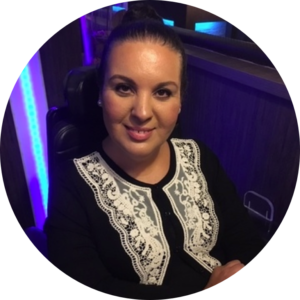Psychological complaints such as stress, sleep problems, anxiety complaints and gloominess may cause you to lose the overview of your finances. It can get in the way of solving or tackling the money problems, which often causes feelings of shame, anger, sadness or loneliness.
People with psychological complaints often depend on benefits, because they are (temporarily) unable to work. Your income that you are used to changes and you will have to make adjustments quickly. But what adjustments do you make? How do you get balance in your bank account and keep that balance?
Step 1: Organize your administration
The first step is that you make yourself a cup of coffee or tea, sit quietly at the table with all your financial records. Grab a notebook and list all your monthly income and expenses in columns. Keeping track of your income and expenses in a notebook is also known as a housekeeping book.
You can think of income as: salary, 13th month, holiday pay, tax refund, allowances, alimony, cost of living in persons or monthly or annual allowance from family. Add up all this income. At the bottom of the column you get one amount for your income.
After you have all the income, you create a column with all your expenses per month: fixed monthly charges, such as mortgage / rent, insurance, gas, water and electricity. Then the monthly costs, such as clothing, gifts, outings, meals, groceries and other expenses. Add up all expenses and you will get an amount for your expenses at the bottom of the column.
You now have two final amounts: 1 for income and 1 for expenses. Try to keep track of this for a few months. This way you get a clear overview of your income and expenses.
Step 2: Overview of income and expenses
Take the overview of your income and expenses. What do you notice? Ask yourself the following questions;
- Are the income and expenses in balance?
- How much can you set aside each month to save?
- How much are you short of each month?
- What do you spend more or less on than you thought?
- On what could you save on?
By asking yourself such questions, you can also adjust your expenses. Write this on your household book! Make adjustments to your expenses and view the results in the following months. Maybe you can save more than you think.
Step 3: Make a money box
You can create a digital “money box” on most savings accounts. I call this a buffer. With a buffer you can overcome unexpected major expenses, such as a washing machine that breaks or a refrigerator that suddenly fails. This will prepare you for unexpected expenses and you will experience less stress.
Step 4: Savings goal(s)
Make different saving goals for yourself with the amount of money you need for that. For example: I want a vacation with my children and husband to a resort in Egypt at the end of next year. Therefore I need € 4,000. I also want to get my driver’s license in two years and therefore I need € 3,000. Divide the amount over the months and see what is realistic to set aside each month.
Is it a realistic and achievable goal? Then you can start saving. Is it not realistic? Then ask yourself the question; what is a realistic feasible time frame for achieving this goal?
Success in getting balance on your bank account!
Do you need help with setting goals or do you have money problems? Talk about it with your online professional.











